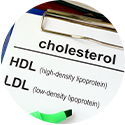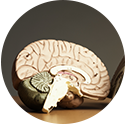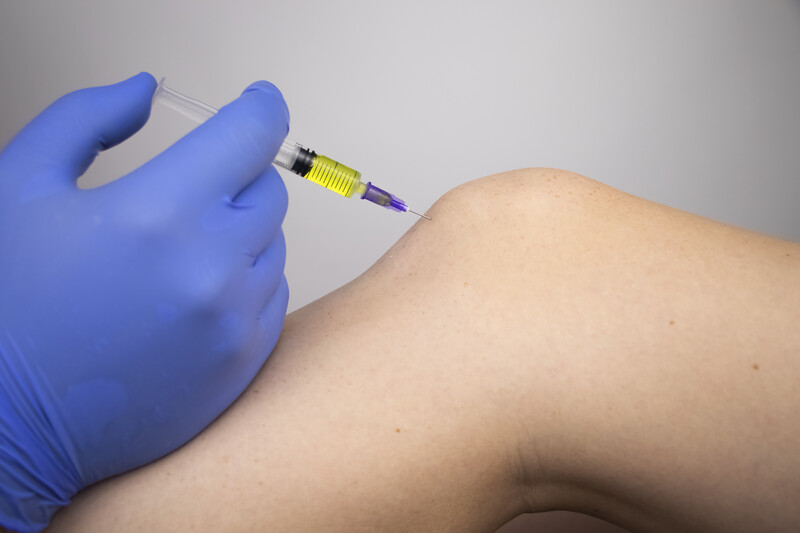For more than 33 years, the Magaziner Center for Wellness has been at the forefront in using new and innovative treatments for healing acute and chronic back and joint pain. Over this time we have seen many chronic pain patients who have had significant relief from cortisone injections, sometimes short-term, sometimes long-term, but the effects have now “worn off,” and these patients are seeking options.
We have also seen patients who have not had significant relief and in fact suffered from terrible side-effects directly related to the cortisone steroid injection. These people are also looking for the alternative, new, and innovative treatment options. Later in this article we will discuss these options. First, let’s look at new research at some of the problems patients face after steroid injections for back pain and joint pain.
This short assessment of the benefits and risks of cortisone injections comes from the journal Pain Physician (1) January 2021:
“The current evidence would suggest that the use of corticosteroids provides moderate evidence for short-term pain reduction and improvement in function. There are multiple potential adverse effects, such as toxic damage to articular cartilage, as well as numerous systemic side effects, including a reduction in immune function and an increased risk of infection, of which physicians need to be aware.”
After the epidural
A November 2019 (2) study examined the adverse effects of an Epidural Steroid Injection which are attributable to the systemic effects of corticosteroids. In the introduction to the study the researchers listed the potential complications:
“Central steroid response (this is a nervous system adverse response), including sleeplessness, flushing, and non-positional headache, insomnia, hiccups, flushing, and increased radicular pain, represents some of the most common immediate or delayed adverse event related to epidural steroid injections.”
The systemic effects of corticosteroids (this is the whole body adverse response) themselves likely represent the most commonly encountered complications that result from Epidural Steroid Injection. These include hyperglycemia, hypothalamic-pituitary-adrenal axis suppression, decreased bone mineral density, and others.”
What does the hypothalamic-pituitary-adrenal axis do? What happens when it is suppressed?
Suppression of the hypothalamic-pituitary-adrenal axis can result in an impaired digestive system, an impaired immune system,sexual dysfunction, mood and emotional swings, dysfunction of the body’s energy systems that will lead to excessive fatigue.
Neuropsychiatric symptoms
A July 2019 presentation in the State Medical Society of Wisconsin’s Journal WMJ (3) noted a case of psychosis following epidural injection. They study authors wrote: “Neuropsychiatric symptoms are a well-described side effect of systemic corticosteroid therapy and can range from mild to severe.” In this case including psychosis.
After the joint injections
A December 2018 study (4) examined the negative impact of and side effects of steroid injections into the spine and joints. Here is what they found:
“Local glucocorticoid injections are often used to treat joint, soft tissue, or spinal pain, but the systemic side effects associated with these injections are poorly understood and not well recognized. There are significant known risks to systemic administration of glucocorticoids. However, there are no guidelines that address issues of systemic absorption, overall systemic risks, or other side effects of locally injected glucocorticoids. . . it is clear that both intra‐articular and epidural injections can have systemic effects for weeks and that complications may be associated with their use, including Cushing syndrome (too much too much cortisol in the blood causing fatty hump between the shoulders, a “moon-face” rounded appearance among other challenges), loss of bone density, infection, and hyperglycemia.
The concurrent use of oral steroids, the number of injections, and the type and dose of glucocorticoids used all are important considerations in estimating risks.”
The researchers here point out that if a patient is taking oral steroids it supplies a cumulative dose that needs to be considered in the possibility of increasing side-effect risks.
At the Magaziner Center for Wellness, we have successfully, non-surgically, treated treat back and spinal issues and without resorting to cortisone or long-term medication usage. Using prolotherapy, Prolozone®, platelet-rich plasma and cellular regenerative therapies, we accelerate and enhance the body’s natural healing process. By combining these therapies with good nutrition, healthy nutraceuticals, energy medicine and osteopathic manipulation, we have been able to successfully reduce pain in thousands of patients.
Steroid-induced avascular necrosis
A study from Georgetown University Hospital published in June 2021 (5) describes the challenges of treating steroid-induced avascular necrosis this way:
“Steroid-induced avascular necrosis (AVN) of the lower extremity is a destructive process of the bone found in patients who have been treated with these medications for a variety of medical conditions. There are several proposed etiologies for development of this condition, however much debate still remains for the exact pathophysiology. The main clinical characteristics include edema, arthralgias, and restricted joint range of motion.”
Cortisone and hyaluronic acid
Here is what a recent study (6) noted:
“The efficacy of corticosteroid and hyaluronic acid injections for knee osteoarthritis has been questioned. The purpose of this study was to determine the impact of the American Academy of Orthopaedic Surgeons (AAOS) clinical practice guidelines on the use of these injections in the United States and determine if utilization differed by provider specialty.”
A little background:
(After new AAOS guidelines were issued that questioned how effective these treatments were: “The trend in use of hyaluronic acid injections by orthopedic surgeons and pain specialists decreased with time following the second-edition clinical practice guideline but did not change for primary care physicians or nonoperative musculoskeletal providers.
Subtle but significant changes in hyaluronic acid and corticosteroid injections occurred following the publication of (new) clinical practice guidelines. Although the clinical practice guidelines did impact injection use, given the high costs of these injections and their questionable clinical efficacy, further interventions beyond publishing clinical practice guidelines are needed to encourage higher-value care for patients with knee osteoarthritis.”
Corticosteroid injections in the hip and knee: Not as safe as doctors think
In October 2019, doctors published their study: “Intra-articular Corticosteroid Injections in the Hip and Knee: Perhaps Not as Safe as We Thought?” in the medical journal Radiology.(7). Here is what they wrote:
“Intra-articular corticosteroid injections are frequently performed to treat osteoarthritis and other joint-related pain syndromes; however, there is conflicting evidence on their potential benefit.”
Do cortisone injections accelerate osteoarthritis damage?
“There is a lack of prospective and large retrospective studies evaluating potential joint findings, including increased risk for accelerated osteoarthritis progression or adverse joint events, after treatment with Intra-articular corticosteroid injection.
Four main adverse joint findings have been structurally observed in patients after Intra-articular corticosteroid injections: accelerated OA progression, subchondral insufficiency fracture, complications of osteonecrosis, and rapid joint destruction, including bone loss.”
Options
It is clear from these studies that cortisone does not heal joint and back pain, it suppresses inflammation. If you had cortisone injections and are still seeking pain relief, you know this to be true in your case. If you would like to explore more information on treating your back or joint pain, please contact our office so we can start a conversation with you.
Related articles:
Treating Joint Inflammation. The Problem With NSAIDs.
Are Women Waiting For a Knee Replacement They Do Not Need?
https://drmagaziner.com/knee-pain/stem-cell-treatments-for-bone-on-bone-knees/
Are Women Waiting For a Knee Replacement They Do Not Need?
References
1 Stone S, Malanga GA, Capella T. Corticosteroids: Review of the History, the Effectiveness, and Adverse Effects in the Treatment of Joint Pain. Pain Physician. 2021 Jan;24(S1):S233-S246. PMID: 33492920.
2 Rosati R, Schneider BJ. Systemic Effects of Steroids Following Epidural Steroid Injections. Current Physical Medicine and Rehabilitation Reports. 2019 Dec 1;7(4):397-403.
3 Fischer M, Kim PY. Corticosteroid-Induced Psychosis After a Single Transforaminal Epidural Steroid Injection. WMJ: Official Publication of the State Medical Society of Wisconsin. 2019 Jul 1;118(2):91-4.
4 Stout A, Friedly J, Standaert CJ. Systemic Absorption and Side Effects of Locally Injected Glucocorticoids. PM&R. 2019 Apr;11(4):409-19.
5 Malanga GA. Corticosteroids: Review of the History, the Effectiveness, and Adverse Effects in the Treatment of Joint Pain. Pain Physician. 2021;24:S233-46.
6 Bedard NA, DeMik DE, Glass NA, Burnett RA, Bozic KJ, Callaghan JJ. Impact of clinical practice guidelines on use of intra-articular hyaluronic acid and corticosteroid injections for knee osteoarthritis. JBJS. 2018 May 16;100(10):827-34.
7 Kompel AJ, Roemer FW, Murakami AM, Diaz LE, Crema MD, Guermazi A. Intra-articular corticosteroid injections in the hip and knee: Perhaps not as safe as we thought?. Radiology. 2019 Oct 15;293(3):656-63.
8 Wyles CC, Houdek MT, Wyles SP, Wagner ER, Behfar A, Sierra RJ. Differential cytotoxicity of corticosteroids on human mesenchymal stem cells. Clinical Orthopaedics and Related Research®. 2015 Mar 1;473(3):1155-64.





































Recent Comments